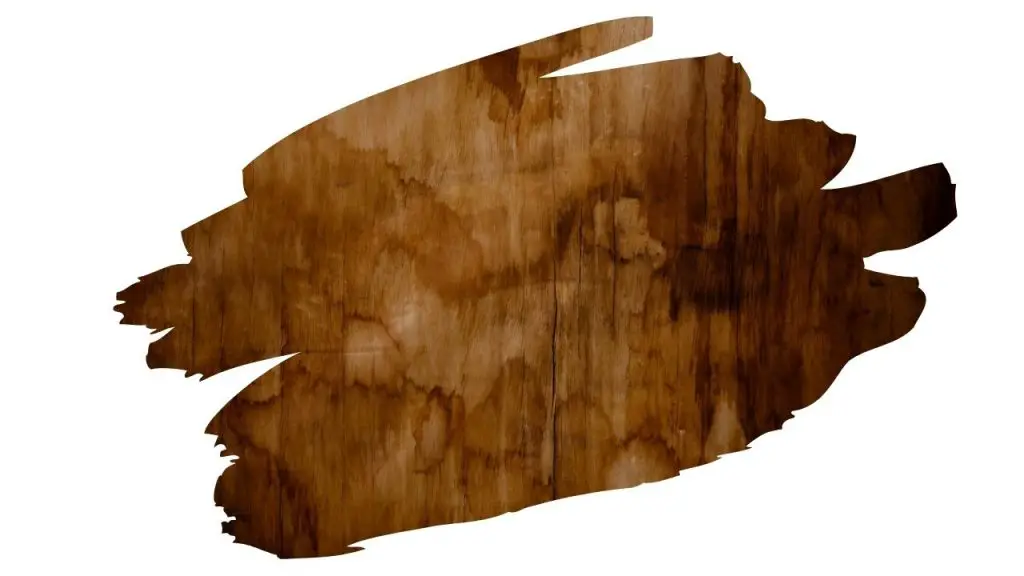Has this ever happened to you? You’ve decided to give that worn down furniture a bit of a touch up. And though you find a few cracks here and there, a dab of wood filler soon fixes those right up.
And, to help rejuvenate its appearance, you figure wood stain is the best way to inject a bit of color back into it.
But, after adding a coat of stain, you’ve noticed something as it begins to dry. The wood filler you used to help repair those scratches and cracks has somehow made the wood stain appear all splotchy in parts. And no amount of stain coats seems to solve the problem.
So what should you do when wood filler makes wood stain turn out blotchy?
If you want to fix blotchy looking stain, you have two options;
- Sand off the stain completely and start again. After you’ve removed the stain, apply a shellac wash coat to seal the grain. And then reapply your wood stain.
- Apply a wood glaze product specifically to the blotchy spots. Wood glazes are similar to wood stains in that they are a way for you to add color to wood. However, you have more control over how much color you can add to wood (compared to stains).
Now, the main difference between stains and glazes boils down to how they bind with wood. Wood stains are designed to penetrate wood, whilst wood glaze instead prefers to just sit on top of a top coat of paint or even stain.
As wood glazes tend to just sit atop wood, they tend to leave behind patchy coloring. So only use a wood glaze as a way to touch-up problem stain blotching, and do not use it as a way to give wood a full coat of color. Instead leave the full color effect job to stains and finishes.
But if you had to choose between the two solutions listed above, which one should you opt for? Well, keep reading to learn the answer to that question and so much more right here on The Woodwork Place…

This post may contain affiliate links to products that we receive a commission for (at no additional cost to you). Learn more here.
Why Is My Stain So Blotchy In The First Place?
Stain will turn out blotchy whenever it soaks unevenly into the surface of wood. Parts of the wood will take on stain readily, while other parts resist.
This results in an uneven looking surface color.
So Why Is That Wood Filler Showing Through Stain?
Well, wood fillers aren’t great at taking on stain. Sure, they do a fantastic job at filling in cracks in the surface. However, this putty-like material doesn’t work like natural wood.
It doesn’t bend and move like wood does. And it doesn’t soak up oils or moisture like wood does either.
So Can I Stain Over Wood Filler?
Rule of thumb, no you can’t. For the best staining results, you need to stain onto bare wood. And wood filler just isn’t made of the natural stuff.
Still, you could try using stainable wood filler products.
For example, Minwax Stainable Wood Filler can take on Minwax stain products – allowing for wood filler to blend right in with the surface wood.
But I Used Stainable Wood Filler! Why Is My Stainable Wood Filler Not Staining Either?
There are many stainable wood fillers on the market, and all make the holy grail claim of being able to take on stains just like natural wood.
Wood fillers are great for hiding the nicks, chips, and blemishes that can mar the surface of a piece of wood. Wood filler can be stained, sanded, and even screwed into.
Still, it won’t take stain the way natural wood can. So, you have to accept wood filler for what it is – no matter how hard you might hope for it to act like natural wooden material.
And if you’re wondering how to get the most out of wood filler, then this article is for you: Is There A Wood Filler You Can Actually Screw Into? (Solved!). There, we show you how to get the most out of wood filler.
Related Post: Can You Really Stain Over Wood Glue? (What You Need To Know)
How Do You Fix Uneven Blotches After Staining?
Well, you have a few choices.
You can spot-blot repair, or you can start again. Or you could try evening out the color on your woodwork piece with gel stain.
When it comes to staining wood, gel stain works differently than regular penetrating stains. Unlike the latter, which work by saturating wood fibers, gel stain acts more like a paint, because it sits atop the surface.
However, this crucial difference has a more noticeable effect on how your project looks.
A penetrating stain won’t hide that gorgeous natural wood grain. But of course, if you want to cover up the texture of your wooden surfaces, then a gel stain can do just that.
If you’re looking to learn more, be sure to check out: Gel Stain Not Drying? (Learn How To Fix This Common Gel Stain Problem). It’s got all the info you need!
But if you had to choose, you are much better off going the route of starting again. And you do this by removing the stain.
Step 1: Removing Wood Stain
This step involves sanding off the stain completely. You do this by sanding down the board using a medium-grit (100-150 grit) sandpaper.
You can do this by hand, or you can use an electric hand sander if the surface you are cleaning up is quite large.
After you’ve sanded down to the bare wood, you need to apply a shellac wash coat to the surface.
What Is A Wash Coat? This is a very thinned out finish (usually shellac) that is brushed onto bare wood to help seal it. After which you can then apply wood stain.
Step 2: How To Mix A Home Made Wash Coat
Making a wash coat isn’t a straightforward recipe. The ingredients of a shellac wash coat are simple enough (shellac and alcohol). However, figuring out the ratios you should use isn’t as simple.
When making a shellac wash coat you will be blending two ingredients together; shellac and pure ethanol. The ethanol alcohol is there to thin out the shellac.
But you need to make sure that the wash coat solution isn’t too thin, otherwise it won’t fill in the wood grain evenly. If that happens, then your wood stain application will turn out blotchy all over again.
So, when you buy a shellac product, check the ‘solids content by volume’ of it (this should be available in the information provided by the manufacturer).
Now, a shellac product such as Zinsser’s popular shellac Seal Coat contains 16% solids content by volume. To be more precise, it ranges between 15.7% and 16.7%, but lets stick to a nice round 16% for now.
For a good wash coat solution, however, we need a solution that has 5% solids content by volume.
So we need to thin out that Seal Coat product so that its 16% solid content is reduced down to 5%.
We do that using the following formula:
- Shellac Current Solids % divided by Wash Coat Optimal Solids % = A
- A multiplied by Total Ounces of Shellac = B
- B minus Total Ounces of Shellac = C
- C = Total Ounces of Ethanol Required
In other words, when applied to the real world, let say we poured out a total of 16 ounces (2 cups) of Zinsser’s Seal Coat. We now need to figure out how much ethanol to add in order to thin it down to just 5% solid content.
So here is how we would do it. Zinsser’s Seal Coats Solid Content is 16 percent, while an optimal Shellac Wash Coats Solid Content is 5 percent:
- 16 divided by 5 = 3.2
- 3.2 multiplied by 16 ounces (2 cups) of Zinsser’s Seal Coat = 51.2
- 51.20 minus 16 ounces (2 cups) of Zinsser’s Seal Coat = 35.2
- You need to add 35.2 ounces of ethanol to 16 ounces of Zinsser’s Seal Coat in order to thin it down to 5% solid content.
You should apply this wash coat, (using a brush), onto the bare wood.
Allow it time to dry first before giving it a light sand with fine grit sand paper (320-400 grit).
Step 3: Reapply Wood Stain
After you’ve lightly sanded down the wash coat, wipe down the surface so that it is free of dust and dirt.
And now you can go ahead and reapply that wood stain.
And if you want to learn more about applying wood stain blends, check out our post here: Can You Really Try Mixing Wood Stain And Danish Oil Together?
Will Polyurethane Even Out Stain? No, not really. An oil-based polyurethane can change the color of stained wood, but it won’t even out blotchiness. Water-based poly will do even less, as it can only create slight color changes in the stain.
Some Final Thoughts
At the end of the day, your refinishing project isn’t lost if that stain doesn’t turn out right.
Sanding off stain and starting again is relatively simple. And applying a shellac wash coat, (after you’ve sanded off the stain), will seal off the grain.
When you then apply a fresh coat of stain over that wash coat, the stain won’t be able to penetrate the grain. And this will help the stain to apply onto the surface of the wood much more evenly.
Now while this isn’t the perfect solution, it is enough to fix a botched staining job in a pinch.



